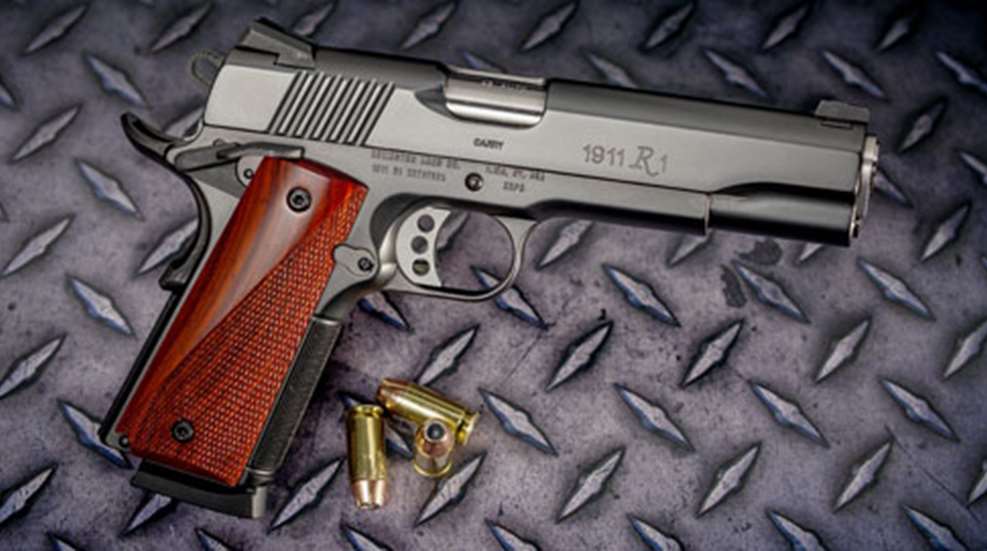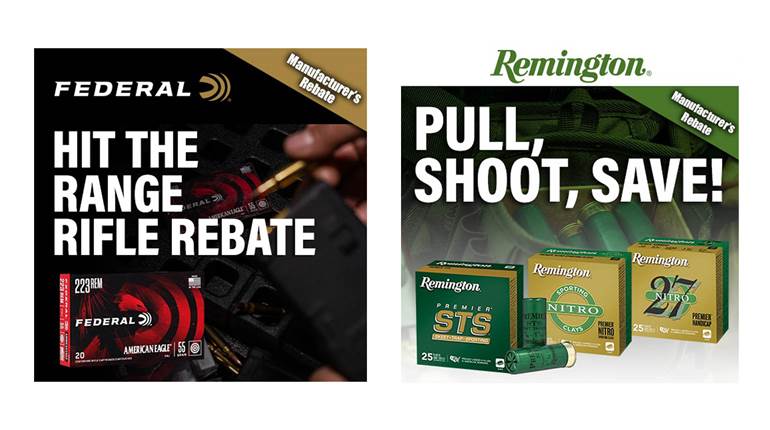
5/30/2013
American shooters seem to have an unending desire for .45 pistols made on the M1911A1 pattern. Now 102 years old, the grand old pistol continues to enjoy brisk sales, despite a notable lack of so-called “modern” features—double-action-only triggers, enhanced-capacity magazines and polymer receivers. This fact is well known and needs little in the way of amplification. Simply stated, the M1911-style pistol is a classic.
A couple of years ago, the nation’s oldest gunmaker took the big step of tooling up to produce the gun for the first time in decades. For the first time in the modern era, you could buy an M1911 in the bright green box associated with Remington. While not exactly news at this point in time since the gun was written up in these pages, realize that the last time the Remington name was associated with the M1911 platform was when its lineal predecessor, Remington-Union Metallic Cartridge Co., made M1911 pistols during World War I. This should not be confused with World War II M1911A1s made by an unrelated office machine company named Remington-Rand.
As of mid-2013, the current Remington firm will have been making its version of the M1911 pistol for about three years. The guns have sold in respectable numbers, so much so that the firm could branch out into the variation market. As much as the American handgunner likes his M1911 model in original G.I. configuration, some prefer one of the many variations of the basic theme that have appeared in the past few years. Obviously, one of the more popular M1911 variants is the abbreviated model with a shorter slide and barrel or a shorter butt—or both. Big Green has yet to get into this side of things, but it’s just getting warmed up. Thus far, the expanded line of Remington’s R1 products consists of all 5-inch-barreled models.
There’s nothing wrong with that. This is the basic format originally engineered by John Browning, Colt and Army Ordnance. A proven design, the gun has been made all over the world and there are endless variations. The Remington catalog offers—in addition to the original R1—a Carry version, a Stainless-steel model and an ornamented Centennial gun. Additionally, there are Enhanced and Enhanced Stainless models, as well as an Enhanced version with threaded barrel. This latter gun incorporates extra-tall sights for use with a screw-on suppressor—a device more commonly used these days than in the past. This is despite a requirement for NFA registration and purchase of a tax stamp. And finally there is an uncataloged two-tone R1 made for sale through the TALO Distributor’s network of retailers. For this article, I was able to lay hands on three different R1s—the Standard gun, the TALO special edition and one of the new Carry models. In order to get an idea of the pistols’ performance, I set out to handle and fire each model under the same set of circumstances. As it happened, this turned out to be a rewarding experience.
Let’s turn our attention first to the basic R1 pistol, which I call the Standard model. An all-blued-steel pistol, the Standard has a combination of features gleaned from both M1911 and M1911A1 G.I. guns. Except for the flat mainspring housing and big dovetailed sights, it is quite like the M1911A1 pistol I was issued for wartime service in Vietnam. Remington prudently varies from that menu of features by including a set of very large sights with three-dot highlights. It also used the flat mainspring housing of M1911 guns, which is usually best for aimed fire. The finish is a modern oxide coating, dead black in color. One of the gun’s features that I particularly like is the checkered walnut stocks, made in the original, and I believe, classic double-diamond style. With a vertically serrated flat mainspring housing and characteristic short trigger, as well as thin grip safety, it definitely has the feel of the Government Model .45 pistol.
As a matter of fact, the TALO pistol is pretty much the same thing, differing from the so-called Standard gun only in the stainless-steel slide. Since Remington also makes a complete stainless R1 .45, it was relatively easy to honor TALO’s request for a two-tone pistol. This stylish configuration has gained popularity in the past few years.
On the other hand, the final pistol in our Remington trio is quite different. Called simply “R1 Carry,” it has most of the features required by those who plan to carry their .45s on a daily basis. The price is more than the other two models by a good bit—$1,300 versus $730. But the features of the Carry, long associated with the better custom M1911s, make the package well worth it. To begin with, the Carry comes with genuine Novak sights. They are the LoMount type featuring a plain black rear and a tritium dot front. This is a popular combination with Novak’s customers.With angled cocking serrations and very thorough de-horning of edges and corners—on both the slide and receiver—the Carry is holster-ready and designed for snag-free presentation. It’s also made to be fired, and a couple more features make shooting easier.
For one thing, the gun has a wide, upswept beavertail grip safety with checkered insurance pad. Below that, a mainspring housing—which has been checkered to match—permits a high and proper grip for fast and accurate firing. On the front of the receiver, there’s checkering to match the mainspring housing. A long trigger with three holes and an overtravel stop screw breaks clean at about 4 pounds. Many shooters who actually use M1911-style pistols prefer an ambidextrous safety, so Remington provides one of those. One more practical feature finishes off the cosmetic package. It’s a pair of cocobolo stocks with very nice checkering panels angling back and down to the bottom rear of the butt. It is a very appealing specimen of the M1911 breed.
I fired the guns to develop the accompanying results. The range session involved several hundred rounds of .45 ammunition by the time I finished, and included some Ransom Rest work and a certain amount of informal shooting. In all those rounds, I had exactly one malfunction. It was a failure to chamber. Since it was unusual, I investigated and determined that it was most probably a lack of lubrication. I used a little Rem-Oil and the problem was resolved.
Adhering to the standard American Rifleman protocol of firing three kinds of ammunition—in this case the best in .45 ACP that I know of—I was not disappointed. I first selected two of my standards: Black Hills 230-grain JHP, one of the most consistently accurate service loads available, and Federal Gold Medal 230-grain Match ball, a classic cartridge with decades of service. Finally, I used some of pistolsmith Stan Chen’s ASYM ammunition in 185-grain SDX form. I have never used this brand before, but Chen has a great reputation for quality, so I gave it a try.
The accuracy evaluation further followed the Rifleman protocol of shooting five consecutive, five-shot groups at 25 yards. I used a Ransom Rest securely C-clamped to a concrete bench and chronographed using an Oehler Model 35P. With the exception of the previously mentioned low-lube failure to chamber, there were no malfunctions of any kind. In recent years, I have noted a greater degree of reliability with new guns. It has been uncommon to find a pistol—particularly a full-size model—that doesn’t function out of the box. I guess we’re learning to make them correctly.
I was surprised and impressed with the accuracy of these three Remington .45s. I fired the Standard gun to begin with. It shot groups as small as 0.82 inches (Federal) and averaged 1.89 inches. The TALO Special Edition came next. The two-tone produced a 1.17-inch group and another at 1.29 inches, with an overall average of 2.04 inches. The R1 Carry was the best shooter, with groups as small as 0.52 inches, 0.78 inches and 0.99 inches. The overall, bottom line average of the 45, five-shot groups was 1.81 inches. For box-stock pistols, that is exceptional performance.
I am at a loss to explain why. I see no interior evidence of hand-fitting on the three specimens (which came from different sources, by the way). Our samples appear to be production guns right from the assembly line. Statisticians will tell you that this is too small a sampling of the R1 population to make definitive statements, but it also suggests that the workers at Remington’s Ilion, N.Y., plant are building some fine pistols for American handgunners—again.
Manufacturer: Remington Arms Co., LLC; (800) 243-9700; Remington.com
Caliber: .45 ACP
Action Type: recoil-operated, semi-automatic center-fire pistol
Frame: steel
Barrel: 5"
Rifling: 1:16," LH twist
Magazine: detachable-box; seven- or eight-round capacity
Sights: drift adjustable front and rear
Trigger: 3-lb., 8-oz. to 5-lb. pull
Overall Length: 8.5"
Width: 1.25"
Height: 5.5"
Weight: 38.5 ozs.
Accessories: lockable hard case, cable lock, manual
Suggested Retail Price: $730 (1911 R1); $1,300 (1911 R1 Carry)





































